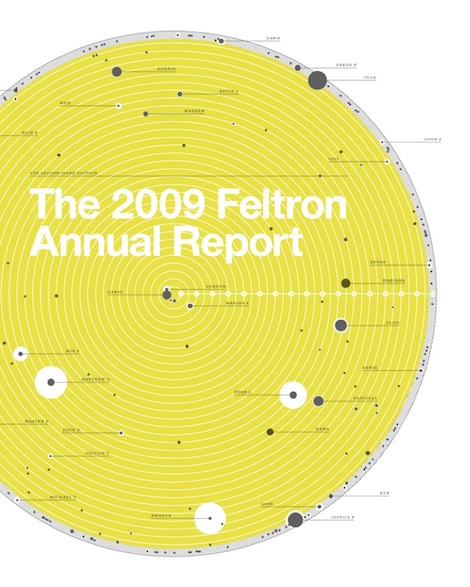What Am I Doing?
So what happens when we can start tracking, automatically, the minutia of our days? This is a whole new world. Nick Felton has been doing some of this on a manual basis for several years. After he has an exchange with someone, like his dentist or a friend, he gives them a card that leads them to a Web page where they fill in some brief info. Felton compiles the results in his Personal Annual Reports, a series of elegantly designed pages showing where he was, who he ate with, and more. Mundane data suddenly becomes interesting once you get your hands on enough of it.

Casual texts, generative texts. Beyond their entertainment value, cheap sensors gathering a wide range of realtime data promise important breakthroughs. The General Electrics Body Sensor Network project (Vital Signs, 2009) seems pretty simple at first: The medical sensors used for tracking patient temperature, heart rate, and other vital signs are usually attached to tangled strands of wire that are difficult for patients and medical professionals to deal with. By using wireless sensors, patients are able to move more freely. Wireless sensors, used to measure impacts among players, are also now part of the NFL's belated interest in addressing concussions in its players.
